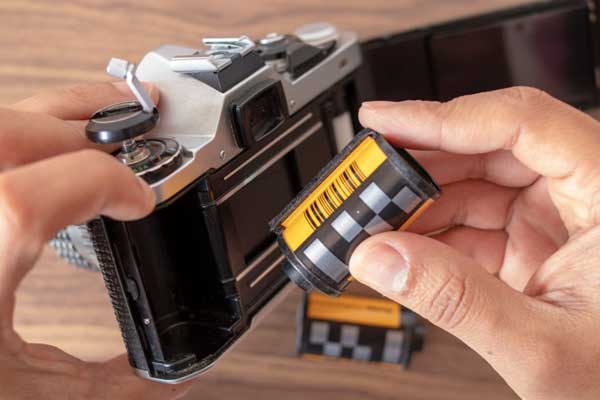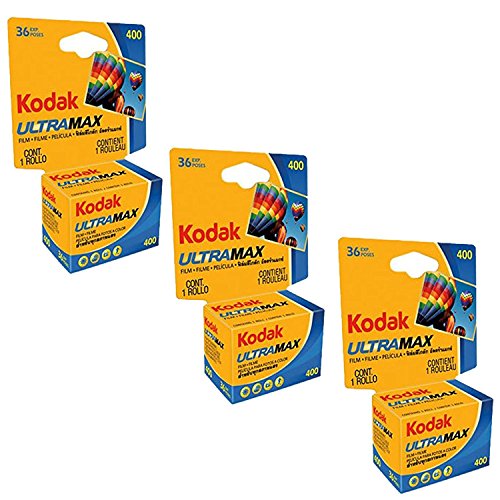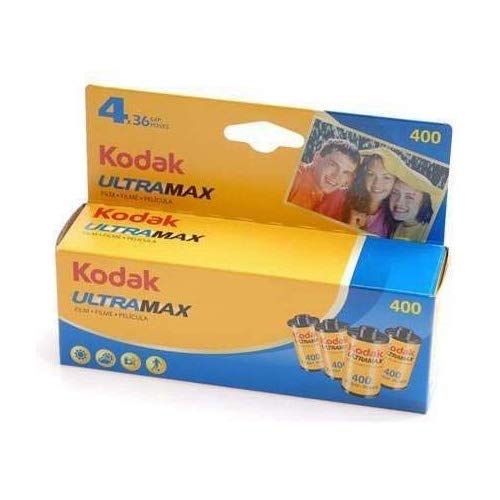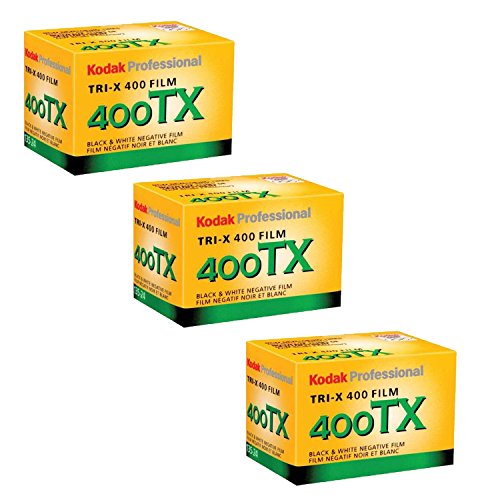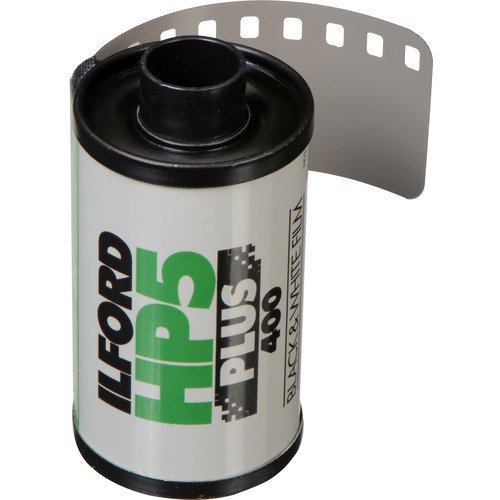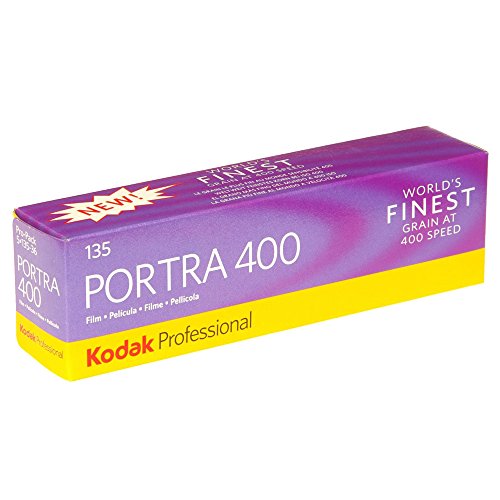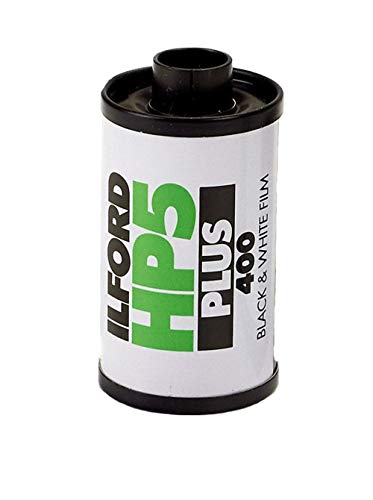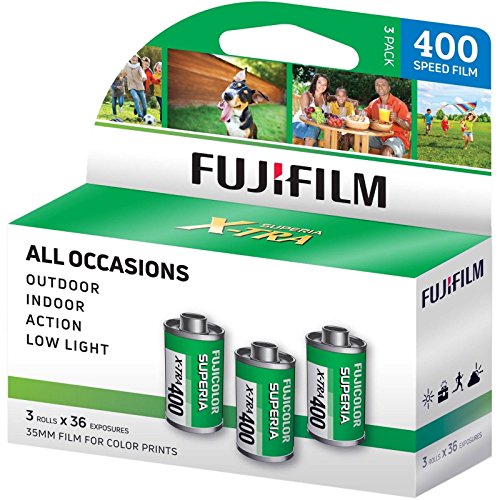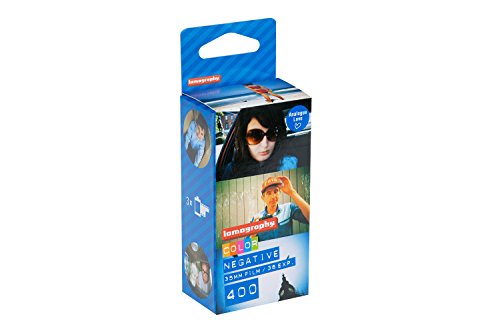Top 10 Best 35mm Film in 2023: Reviews From an Expert
You remember the time, right? When you were running around the house and discovering hidden treasure everywhere?
You would stumble upon antique brass boxes thinking that they are great to store your Legos in.
Wait, what is that mysterious glinting? Hmm, a giant candle holder of some sort!
What your eyes would see next does not require any inviting glimmering to lure you in, for this is something you could recognize from miles away.
Of course, it seems bulkier compared to the compact high megapixel rectangular cameras.
Even then you would be lost in wonderment because “why would anyone need handy-cams when you can click high-end pictures on an iPhone?”
The most solid cameras you know are SLRs and DSLRs. Could it be one of those?
You extend a hand in an attempt to grab it from the pile of old things your grandfather has hoarded in the back of the attic, dust it off, and there it is in all its glory. It seems like a whole new dimension through the small lens and excitement knows not to stop.
You must know how to operate this AT ONCE! Once your grandfather tells you all about its origin, you would be completely hooked. But where would you find film for photography in this time and era?
Fortunately, you can now relive the past and even locate where you will find the best 35mm film.
Name | Editor's Rating | Price |
|---|---|---|
5 out of 5 | ||
5 out of 5 | ||
4.5 out of 5 | ||
5 out of 5 | ||
4.5 out of 5 |
Why 35mm Film?
With technology at its prime as of right now, modernization has become the bane of existence for primordial gadgets like the camera itself, let alone the 35mm films. Anyone can transform a picture to look like it was snapped on an old camera with just one click and honestly, it is quite convenient.
However, why should you still consider to have a 35mm film camera in your possession? Read on to know EXACTLY why.
Origin Of Filters
With the availability of filters in online stores, photos can now be made to have that pastel grainy vibe that made old photos look so authentic. The problem, however, is that they tend to be a bit of an overkill most of the time, if not often.
The presets are usually overdone and fixed and thus, you might find it difficult to fit your photo. Changing any one level of adjustment throws off the entire appearance of the photo.
Lighting Friendly
There is also the issue with the lighting. The filters only seem to do justice to your photos to some extent in only good lighting. Low light photos miss out on the use of these filters because the contrast is extremely difficult to work around. Too bright light, like sunlight, and the overexposure whites out the photo completely.
Accidental Effects
An added feature of these filters is the rainbow lines and spots haphazardly placed on the photo to replicate the accidental light leakage that was usually a common thing with old cameras. However, they tend to be placed wrong or are too bright at times, making the effect rather annoying.
Now, you may be able to easily find yourself a camera to take the photos with. Finding the good-quality 35mm film to go with it, however, is tricky.
We hear you loud and clear. Too many options and too much information in a plethora of tabs can be quite frustrating. Hence, we have reviewed some of the finest in this article to ensure that you have a pleasant experience and an easy one at that, choosing your first set of 35mm films.
Our Top 10 Best 35mm Film in 2023
1. Kodak Ultramax 400 Color Print Film
Ask anyone and they will tell you all about how Kodak has been a household name for more than a century. Born in 1888, Kodak was the brainchild of George Eastman who introduced the concept of the photographic film to the world at mass.
As the pioneer company in the photography business, Kodak had almost 90% of the market share in photographic film industry while accumulating a whopping 85% market share from camera sales. You can clearly imagine what a huge role Kodak played in people’s lives.
Before the film came to exist, portable cameras were pretty much a myth. The only cameras that people would be able to feast their eyes on were the studio cameras which were far from inexpensive and had to be operated via numerous scientific processes that were alien to the General Joe.
Kodak brought happiness and the opportunity to preserve precious memories to all households. As the leaders of the industry, they knew exactly how to build their products and market it to their customers. A truly inspiring story that a vast majority of people were a part of.
Although the 35mm film was not originally created by Kodak, they soon took the market by storm. The Kodak UltraMax 400 quickly became a favorite among users, even if they were a bit out of the affordability range for a lot of people.
Highlighted Features:
2. 4x Kodak UltraMax 400 36 Exposures Film
Kodak had developed its own line of 35mm film cameras to go with their photographic films. This quickly turned out to be an essential tool in a professional photographer’s arsenal and there was no one more worthy than the Kodak in people’s eyes.
You see, they knew their way around to build the perfect blend of film paper for you so that the people were always the recipient of fantastic picture qualities in an era of minimal technological advancement. In fact, they became the fastest-paced maker of tools that defined the entire photography industry.
People have never been able to take a photo on their own before, let alone get their hands on a camera. Hence, the invention of the photographic film was a ground-breaking creation, much like the creation of laptops. Being able to carry your personal computer from place to place was but a dream.
The origin of the 35mm film was a contemporary addition to existing tools since people always wanted to be photographed like in the movies. However, each roll of film only held the capacity to snap 36 photos at a time at the most. That is such a limitation to making countless memories.
With the addition of the extra roll of 35mm film, you can now enjoy a much more relaxed restraint on the number of photos you are allowed to take. Hence, if you are looking to take up outdoor photography with a 35mm, this set is a great way to start and practice your hand at.
Highlighted Features:
3. Kodak Tri-X 400TX Professional Black & White Film
This one is for those who love #BnW. Black and white photography has a beauty to it that is best expressed in photography. You can turn any photo into a black and white one and boom, you have a picture that will turn heads guaranteed.
Yes, we know that there are black and white options in most cameras now but the Kodak Tri-X 400 has a distinct class to it which is quite challenging to replicate. At ISO-400 the grain on this is reasonable which makes it an accurate choice when taking pictures for a vintage documentary.
People seem to have a love-hate relationship with the Kodak Tri-X 400. People who are not a huge fan of a grainy texture usually run the opposite direction while others adore the rather unrefined appearance. Black and white devotees seem to keep going back for more each time.
This is definitely an upgrade from the black and white photos that first came to existence. It is far crisper. There is a common misconception that the “whites” or the light factor is poorly captured which is rarely the case for this. A proper balance between brightness and contrast makes it look like it is a well-adjusted filter.
Honestly, it is Kodak. There is hardly any scope for them to offer anything less than the premium. Yes, the Tri-X 400 might not be as technologically advanced as one would desire it to be, it was and still has set the bar. Looking at life in black and white is not so bad after all.
Highlighted Features:
4. Ilford HP5+ 36 exp B&W Film
So, you need something to take black and white pictures on a regular basis. Kodak can push the affordability range most of the time, yes but there must be an alternative, right?
Something to practice with, something to learn tricks with that is both affordable and comes in a good bulk set while displaying amazing quality.
Ilford HP5 Plus is the answer to your woes. Let’s get down to the specifications.
Much like the Kodak Tri-X 400, the range of exposure on the ilford HP5 Plus is quite fair. They can be easily worked around to shadows and highlights. The film can undergo push-processing to provide great contrast emulsions. If you place your shadows just right, you can get some super cool grey tones if you desire.
You can use the Ilford HP5 Plus to take some bokeh shots while still keeping the subject and the backdrop distinguishable. Here is an example that might give you some inspiration for your next project. (https://www.stocksy.com/1664763/city-portrait-at-night)
The evolved HP5 Plus is actually a strong contender against the Tri-X 400. They picked out all the things that make the Tri-X 400 so great and concocted a great film. Granted, the picture is a little fuzzy but that is just part of the charm.
Highlighted Features:
5. Kodak Portra 400 Professional ISO 400 Color Negative Film
The perfect balance of color, contrast, saturation, and hue make the Kodak Portra 400 a one-of-a-kind 35mm film that should be a part of everyone’s film packs. Here is why.
This film captures colors and skin tones in the most natural essence there is. At least when it was invented, the outcome was quite a remarkable one.
The films maintain light like a professional. Regardless of whether you are exposed to a lot of sunlight or taking pictures in a dimly lit room, the end result is always spot-on.
the Kodak Portra 400 is the best 35mm film if your specialty is taking portraits. The grain is far ahead of its time. It is visibly difficult to pick out a grainy spot, even when printed out in big frames. The polished appearance is enviable.
As mentioned before, the Kodak Portra 400 highlights its subjects in the most natural way possible. In terms of color, they are gorgeously composed. They maintain the cool and warm tones, highlighting the blushing cheeks, freckles, smile lines and even light against a tree branch without bursting in colors.
Highlighted Features:
6. 5x Ilford HP5 Plus 36 Exposures
Your cousin saw you fiddling with a camera and asked you to show her how the camera works. Being the greatest big brother that you are, you show her a few shots of the meadow and it is like watching her stumbling on to a profound meaning to life. Suddenly you realized what to get for her 20th birthday.
This one is pretty standard for a 400 ISO black and white film. It has a great dynamic quality to it that helps the contrast really pop!
But as expected, if you are planning on shooting at night, you would want something more sensitive and suitable for low light settings. But other than that, the Ilford HP5 Plus is versatile enough for most other settings (bright days, cloudy days, dawn, dusk, etc.)
Of course, like every other Ilford product in the market, the film is dependable and high quality with decent grain. However, you do need to determine where your light is in order to get the perfect play of light and shadow to pop up in a black and white picture. Overall this is a great buy at its price range.
Highlighted Features:
7. Fuji Superia X-TRA 3 Pack
Fuji has been giving Kodak a run for its money ever since it stepped foot in the market. Kodak had embraced a “razor and blades” strategy that involved selling inexpensive cameras and charging noticeably high on films. They strongly believed that their supporters would never opt for anything else.
Unfortunately, that led to Kodak eventually filing for bankruptcy earlier in 2012 after which they branched into two separate divisions focusing on consumer products and prints. Fuji swooped in with their ground-breaking marketing strategies and of course, formula and captured a huge share of the market all alone.
Affordability is not the only thing that is attractive of the Fuji Superia X-TRA. The vibrant colors breathe life on to an otherwise pretty normal scene. The film packs a punch in saturation and brings out highlights happily. Some people prefer the Fuji over Kodak because they are rich in color that does not border on extreme.
The Super-Fine Grain Technology gives a polished and satin-like picture quality that is not affected by the saturation produced. The end product is a brilliantly lit photograph that shows reds as prominent as a little girl’s blushing cheeks, the blues as cool as snow and the earthly tones as natural as a baby’s smile.
Highlighted Features:
8. Lomography 400 ASA 36 Exp 35mm Color Film
Some of the readers may frown on the sub-heading in confusion because “Wait, there’s more than Kodak and Fuji?”
Fortunately, yes. Alternatives should exist so that you get the chance to showcase variation in your work if you have a variation in preference. The Lomography Color Pack comes in a handy box with 3 rolls of 35mm film.
Most people are skeptical of the Lomography initially but quickly become fond of the cheaper substitute.
What you will get are unique cool-toned pictures that have a reasonable blue color correction in flash. Similar filters are replicated in popular apps like Snapseed and VSCO but never close enough to the Lomography. This is why 35mm films are still widely used for consumers of all sorts who want a more authentic outcome.
Interestingly, photos taken with the Lomography Color Pack look like they have been retouched with modern photo editing tools. It comes quite as a surprise to people who have never even heard of Lomography. You might be put off by the flimsy pack they come in but do not judge a film by its cover.
The Lomography 400 is the best 35mm film for those who want to save their budgets but won’t compromise with the quality. With brilliant saturation properties that never overdo it, you get a brilliantly reserved splash of colors.
They are easy on the eyes, and frankly, on the soul. Contrast never falters and it picks up shadows as close to the actual scene as possible. The grain is quite invisible to the naked eye unless you zoom in deep.
Highlighted Features:
9. Kodak 10 Rolls GC 135-24 Max 400 Color Print
Okay, imagine this: you had your 4 rolls of Kodak UltraMax 400 films. You used up one and you are instantly hooked. You want to savor your rolls because you never know when you might run out. You might stumble upon a brilliant sunflower field but nothing to memorialize the scene with! How unfortunate!
If that does not convince you, picture this: you are a professional photographer and have been hired by a magnanimous company to collaborate with them in a project that brings life to the 50s. You take a bunch of photos and then you realize, you are dry on films. How embarrassing.
You can also do some cool tricks that are, although, easy to do on Photoshop or Illustrator. However, being able to take photos with the multi-exposure technique manually is an incredible feat. The outcome is a natural and even-toned picture that is worth every buck.
These films allow you the scope to be innovative and take multiple shots in a single frame. That would obviously need some rehearsal, right?
Buying the pack in a large quantity helps you do just that and even more. We know that 35mm films are not always easy to get your hands on and that’s why it is advisable to stock up.
Highlighted Features:
10. Fuji 100 35mm Film CN 135-12 Exp Color Print
If you are looking for a savings pack for portraits and landscape photography, the Fuji 100 Color print is exactly what you need. Available in packs of 5, 10 and a whopping 100, along with an incredibly reasonable price tag, you can worry about one less thing. You may run out of time but not out of films!
Besides the convenient bundle, there is no skimping out on quality. Just like its contemporaries, the Fuji 100 Color Print showcases a brilliant work of color and saturation. It is a close competitor to the Kodak Portra 400. Skin tones, earthly colors, and details on this film are commendable.
The grain is hardly an issue unless you stare at your photos for hours or even days. There is a blue color correction, which can be less preferred at times.
Colors of the sky and water seem a little bluer than what can be seen or desired. However, that is purely up to your personal preference. Some actually like a bluer cast.
Saturation is reasonable, nothing extraordinary though. This is an overall perfect kit if you do most of your photography around greenery or do soft portraits. This film is not everyone’s cup of tea. The Fuji 100 Color Print is more suitable for you if you want to practice color photography and learn to control light and shadow.
Highlighted Features:
Things To Consider Before Buying Best 35mm Film
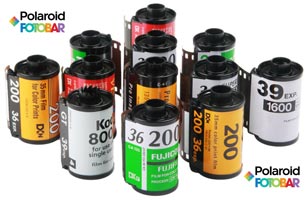
1. Knowing Your Camera
This is incredibly important before you get yourself heaps of films and nothing to use them on. When the 35mm film was first invented, there were dedicated cameras that operated with the film. Kodak had their own line of cameras that catered to this need.
However, the cameras were pretty bulky and it rendered existing films useless. A series of universal cameras then came to play an important role which meant people had the freedom to switch between the films they were using.
Your greatest critic panel will be those people you know have something like this in possession. Learn about the different features and things you can do with these cameras that will allow you to fully reap the benefits. You must be comfortable with the device, otherwise, the entire experience could be a terrible one.
2. BnW or Color All The Way
Before the color negatives were born, the black and white films were a staple even when people did not want it. Color film was the creation of Eastman from Kodak back in 1935, which was pushed out to the consumers from a 2-part color process known as the Kodachrome.
It was perhaps the hottest news in the world. News headlines, papers, kids, aliens - everyone was buzzing about the newest addition to the shelf. Of course, everyone had to have it. Movie posters used to have dedicated tagline that said, “Now in Color!” as if a new way of generating solar energy was discovered.
A period where people were excited to see in color - what a time!
Black and white films need as much consideration as do color films. You need to consider if the film is flexible enough to give you pushed and pulled images. The grain is a huge factor because it tends to ruin the entire photo when the details are already a little wonky.
Color films tend to overdo it with saturation. Initially, it was challenging to find true balance. However, some people prefer the bright burst of colors. Know your preference before you decide on which one to invest in.
3. Film VS Digital
Digital photography has taken over the world, no doubt about that. But the small community of film photography is a growing army. Film photography requires you to learn ways to manipulate all aspects of it manually, for instance, lights, shadows, contrast, brightness, etc.
Photo editing tricks which are usually easily done on easily through a few clicks on high-end photo editing tools have a flair of their own. The fulfillment you get from making something possible with your own hands is truly a profound feeling.
If you are truly up for trying your hand at film manipulation, you should definitely consider investing in 35mm films. Who knows, you might even turn this into a profession.
4. Processing Film
This is perhaps the kryptonite that discourages the user from taking in film photography. The time and money spent on developing each photograph are very cumbersome and patience really is not mankind’s greatest feature.
You can always pay a studio a reasonable charge to have your negatives developed. If you want to transfer it to your desktop, no worries. That is just as easily attainable as having your photos processed. Usually, the same studios can do the task for you in minutes.
The huge chunk of satisfaction of using films for photography lies in the development process. People used to get into fights to have a place of their own to be turned in to a studio. The red light, the transformation you see - it is pretty amazing.
Again, you need a great deal of endurance. If you think you are up for the challenge, now is a good time as any.
Frequently Asked Questions About Buying 35mm Flim
1. Are All Cameras Compatible With 35mm Film?
2. What Type Of Camera Is Ideal for Beginners?
Answer: The thing is if you are JUST learning photography start at levels 1: that is, do not invest in anything you have to pay for. It is ideal to start off with cameras you have lying around. Ask your family or friends or you could even rent one.
If you truly want one for yourself, do not get something expensive. Do not even bother to look at the specifications. Get anything that snaps photos so that you can practice working with the films first.
Once you get the hang of it and want to truly pursue photography, read the comprehensive 35 mm film reviews before making a decision.
3. How To Develop Negatives Into Photos?
Answer: There are several stores around your neighborhood, probably old and tattered, who still develop negatives for a reasonable charge. You can find all the details online if you just search “negative development store near me”.
If you are someone who develops films on the daily, you could perhaps learn to develop negatives on your own to save up for more rolls.
4. How To Develop Prints to Digital?
Answer: Again, certain local stores will do that for you for a charge. These stores even transfer your film on to memory disks so that you can easily move files from devices.
5. What Are Some Additional Tools Required?
Answer: A tripod. You need a tripod. There is no selfie, okay? You need to rediscover what a timer does. You want to have a stable hand to take pictures of yourself. Besides, additional stability is an A+ when you are capturing a scene in motion.
Other than that, a camera bag is always helpful. This will allow full protection for your camera. There are some multi-purpose bags where there is space to place your camera and your films, along with other small tools.
6. How To Rewind 35mm Film?
Answer: Before answering this question, it is to be noted that if you do rewind your film into the roll, it is exposed to cuts and scratches which might otherwise ruin your film. Hence, only rewind it when you are ready.
Accidents like this were a common phenomenon with the 35mm film. You need to inspect your camera thoroughly before doing so. There are usually buttons underneath the camera that tend to be forgotten, mostly out of excitement.
7. What Is Push And Pull Film?
Answer: Pushing films lets less light in, increasing the contrast which is helpful in taking silhouette pictures. Pulling the film, on the other hand, is done to decrease contrast but let the details in the shadows be discernible. This is, however, not recommended on color film.
8. How To Get Effects In The Photos taken?
Answer: There is a lot of tricks that you can do to get some cool effects like rainbow lines, double exposures, solid color photos, etc. Not only are there videos but hands-on tutorials available online that will teach you the know-how. Before that, you need to familiarize yourself with the film to get comfortable.
Final Words
Contemporary photo editing apps can only give you so much. Moreover, pictures on a 35mm film give you the unfiltered, raw, authentic images that are breathtaking to see almost all the time. Even with the fuzzy grain and the not-so-sharp images, what you get looks and feels more valuable.
Even the most mundane scenes have so much story to tell in a 35mm film. You could take a picture of a tree branch with the ball stuck on it and it will tell you the entire plot twist of how it wound up there.
Before making a purchase, conduct thorough research. Skim through all the 35mm film reviews you can find online to sort of jot down the points that go with what you want from the film.
The beauty of these archaic films is that any mistake you make, and even if you are terrible at photography, each photo comes out with as emotion as would be seen when a photographer snaps a photo. All you need are the best 35mm film, a little bit of patience and a lot of curiosity!
Happy snapping!

